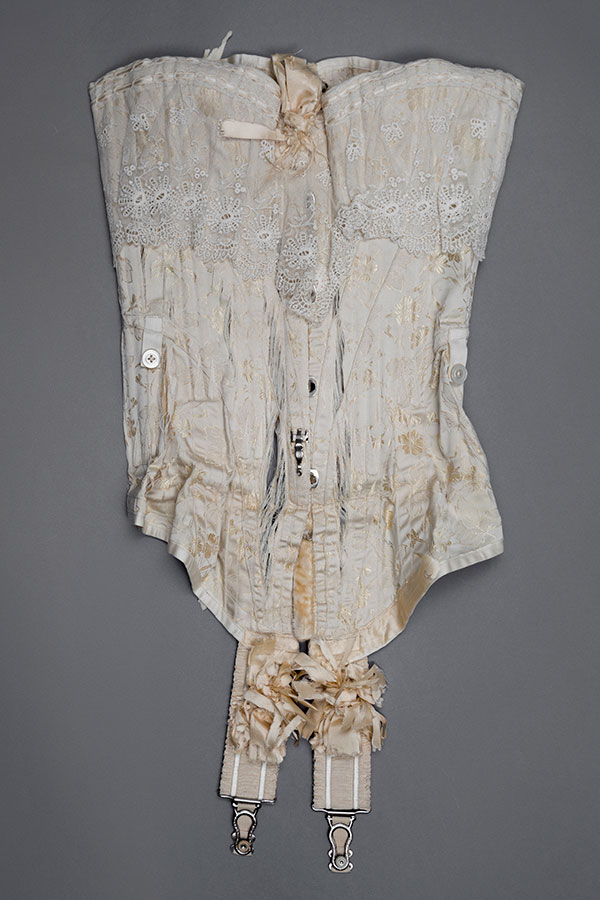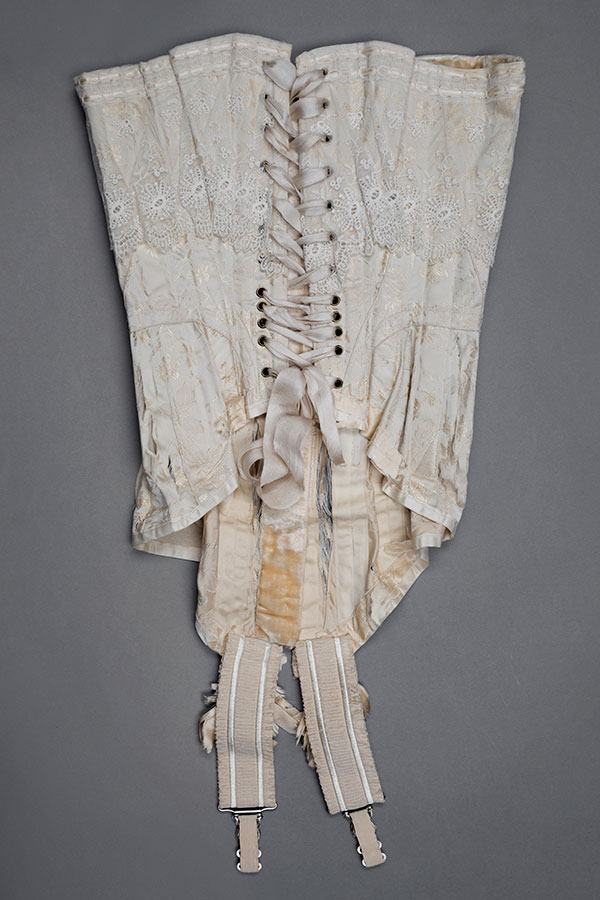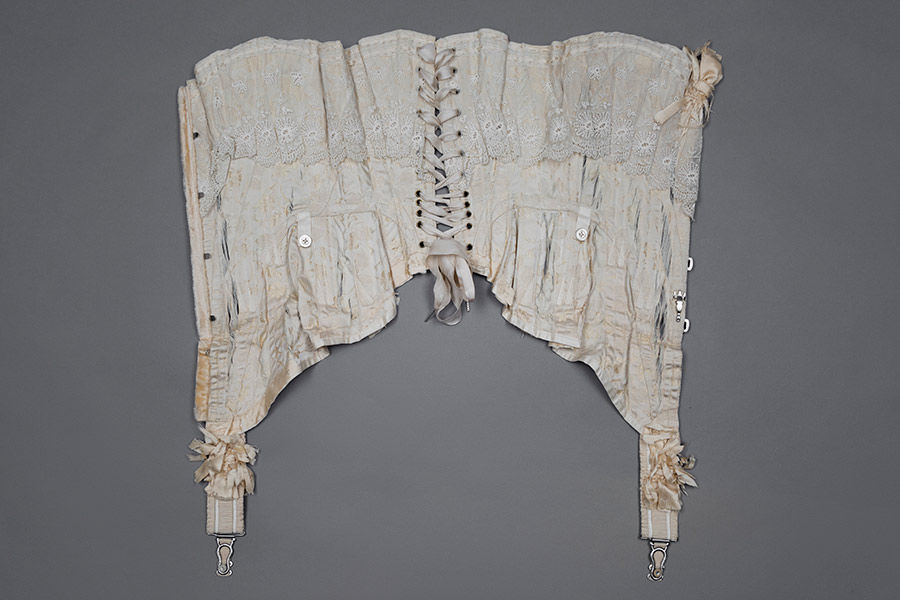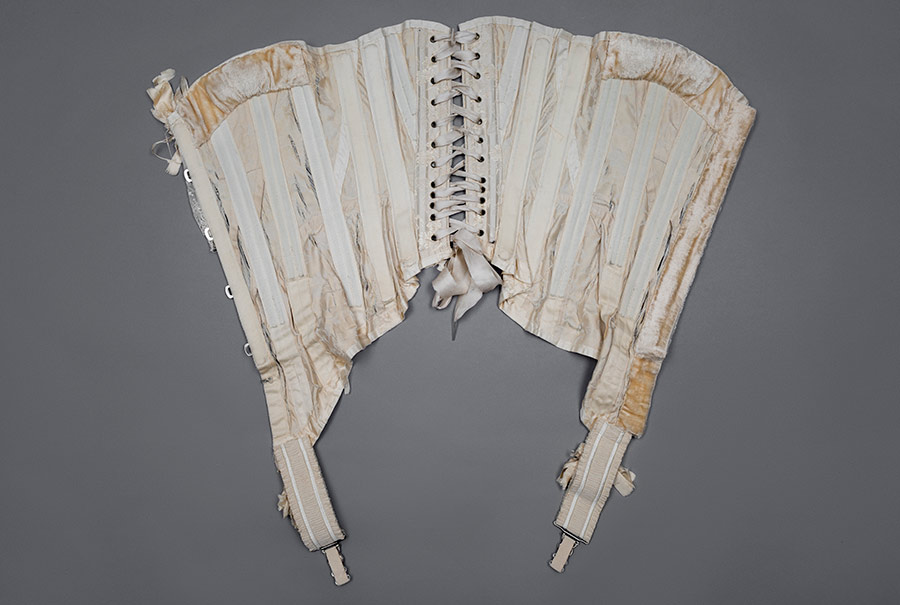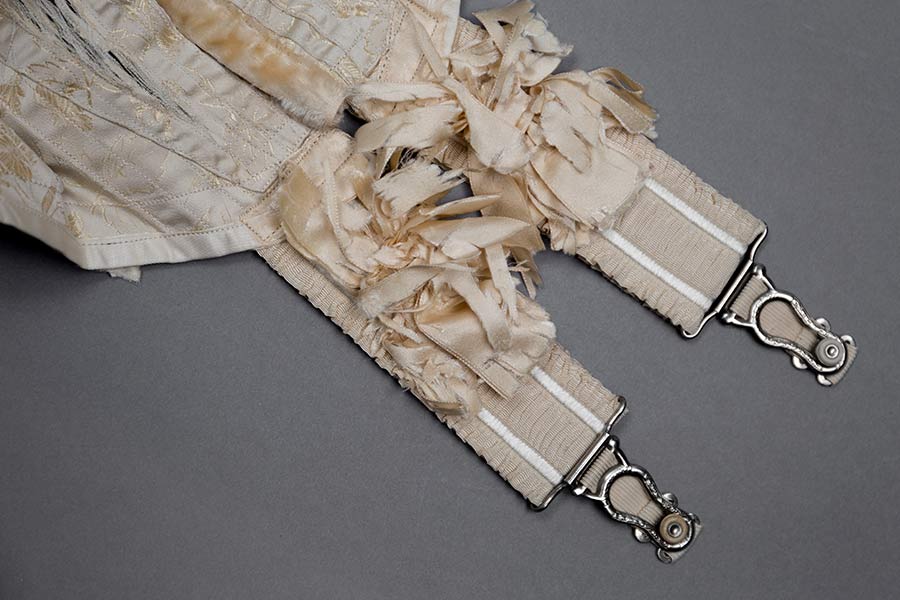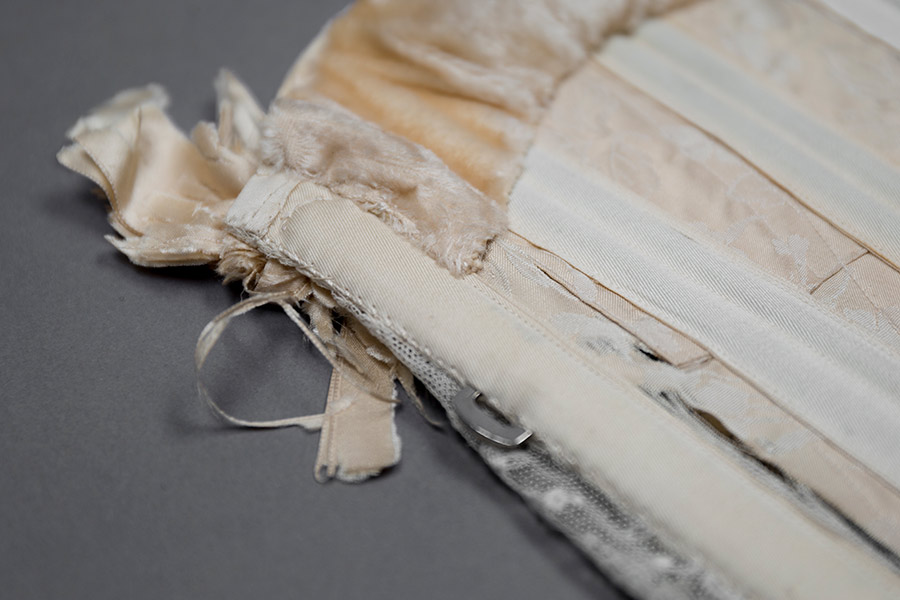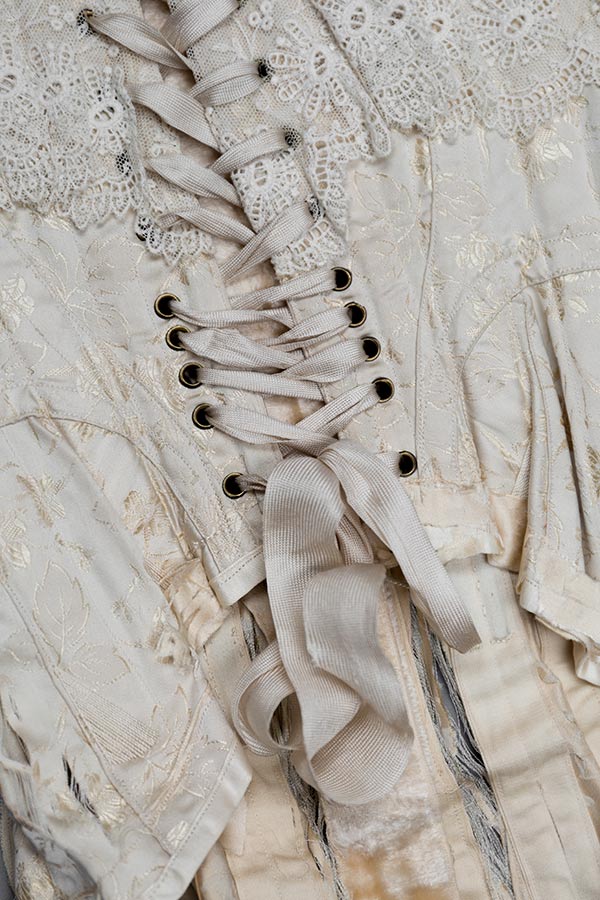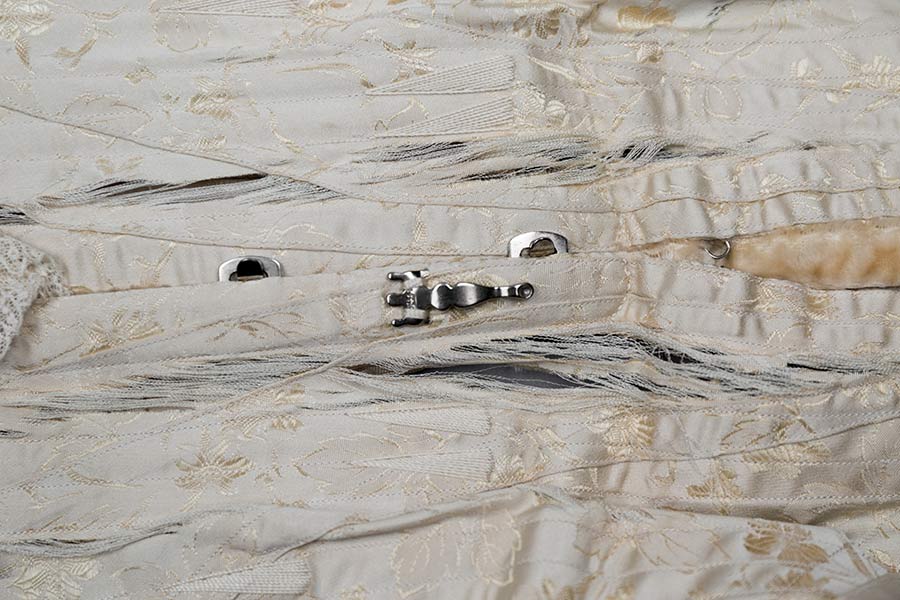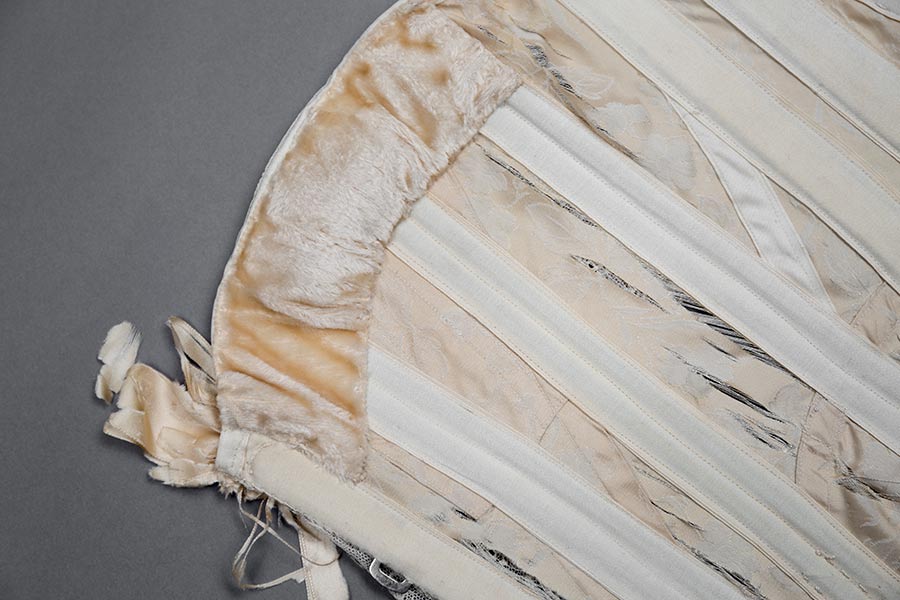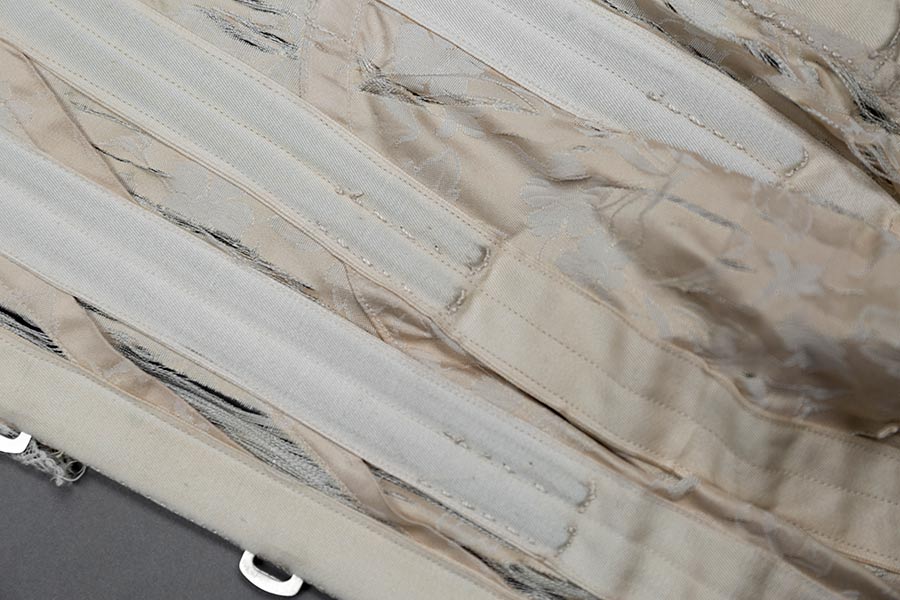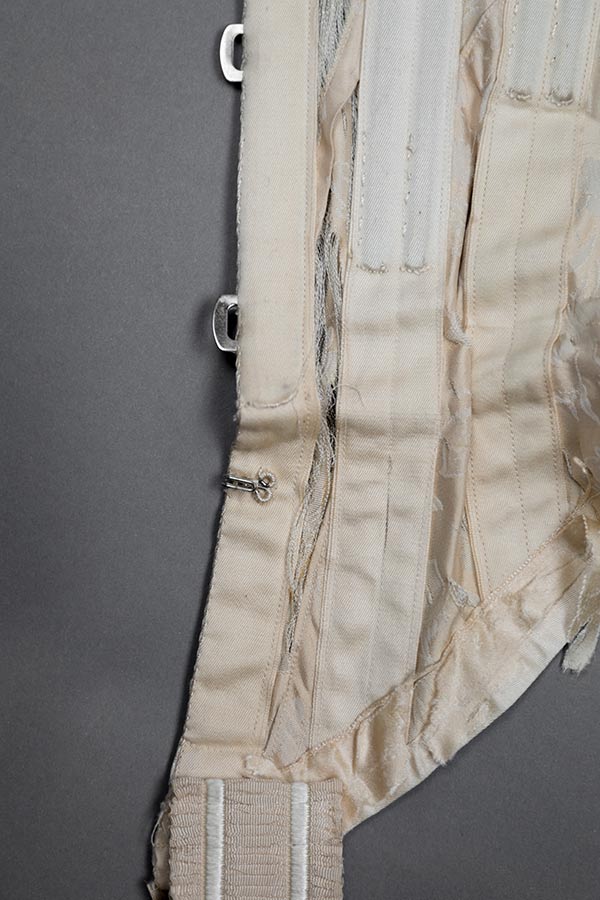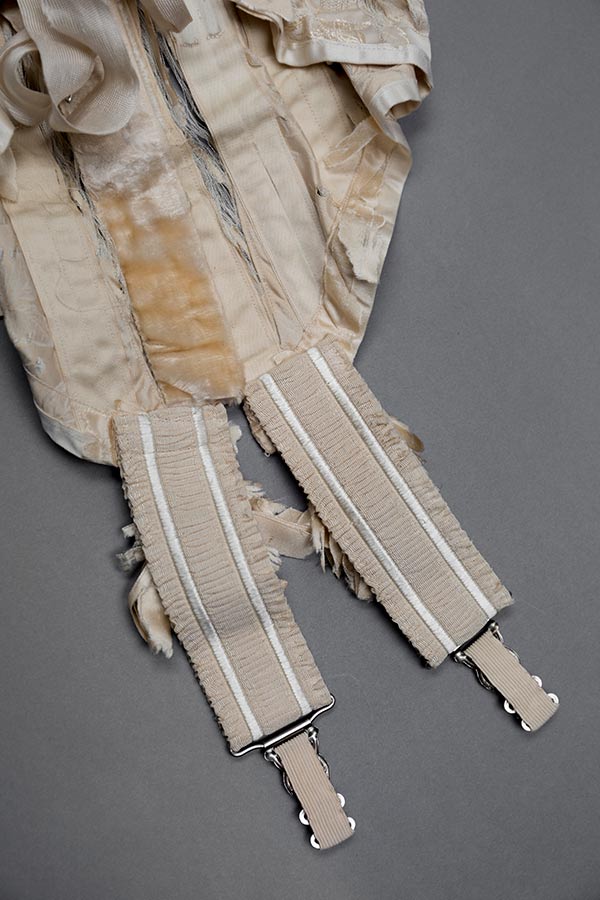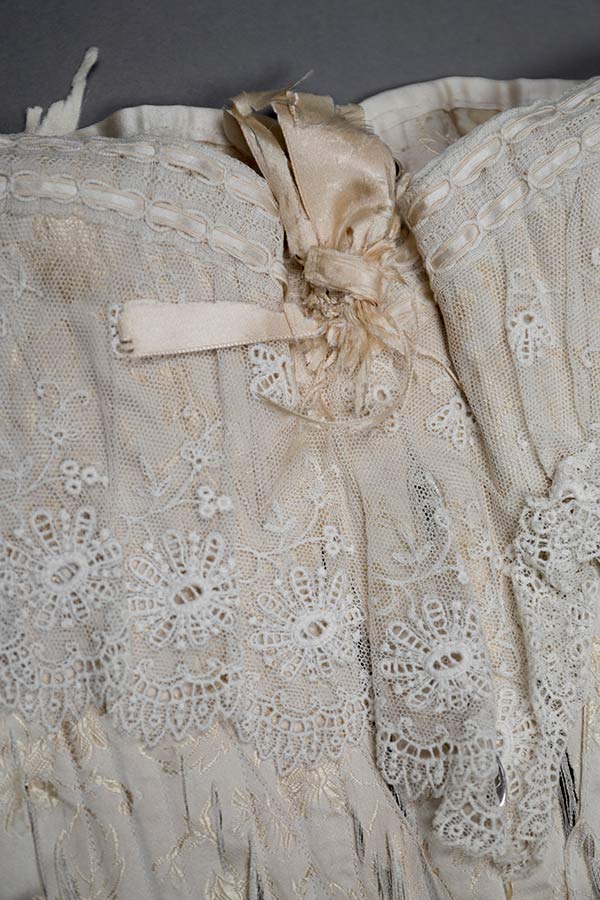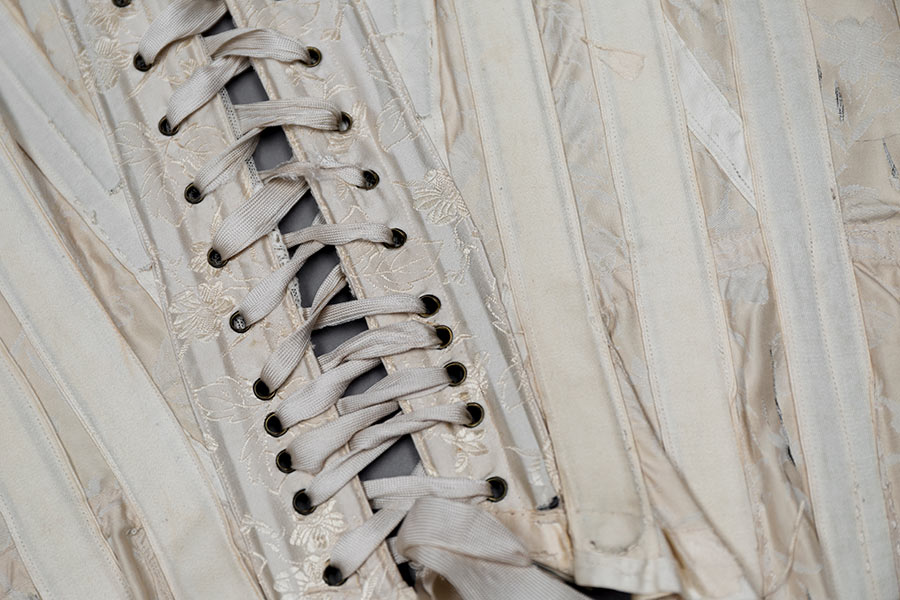Date: c. early 1900s
Origin: France
Fabric: Silk
Although time has not treated this corset kindly and its silk structure is largely in tatters, it is still an exquisite example of Edwardian corsetry. In many ways the corset is typical of the era, yet it also has several unusual and intriguing features.
This is a decidedly luxury garment and was unlikely to be intended for everyday wear, as the main fabric of this corset is a relatively lightweight jacquard woven floral silk (arguably why this corset is now in such poor condition, as silk is prone to shattering with age). It was likely made as a custom garment specially for the owner, as there are none of the usual signs of makers (such as stamps on the garment interior or busk engraving). The main body of the garment is sewn by machine, with extensive hand finishing: flossing embroidery on the bone channels and gore points has been completed by hand, and the interior velvet linings are hand stitched.
The garment pattern is fairly typical of Edwardian corsetry, with the panels following a diagonal slant with inserted gores at the bust and hip for shaping. The hip gores are made of single panels with three darts to achieve the necessary curve. Most panels are either French seamed or taped over with silk ribbon, while the bust gores (hidden by the embroidered trim) are lined on the interior. Bone channels of twill tape have been placed mostly vertically (with some diagonally at the back) on the garment interior to maintain vertical tension. The corset is boned entirely with a combination of flat steel and baleen bones. Mostly 7mm baleen bones are used throughout, with wide 2cm bones used at the side back.
The busk has an unusual loop and hook structure rather than the traditional loop and pin. An additional hand sewn hook and eye beneath the busk would help to keep the longer line centre front closed. There is a petticoat hook to the the right of the busk and buttons at the peak of each hip gore. The corset has two suspender straps at the centre front, with 4cm width elastic and filigree garter tabs. These are not adjustable but may have originally had some stretch.
The centre back panels have 7mm flat steel bones either side of the eyelets, with the eyelets being of the single-piece 4mm variety for a delicate finish, characteristic to this era of corsetry. There are 12 eyelets on each side, with the 4 eyelets at the waist being closer spaced. The eyelets appear to have been applied before the corset was embellished, as many are found beneath the layers of tulle which has later been pierced to allow lacing to pass through. The lacing for this corset is a 10mm wide silk ribbon with silver toned aglets at each end. The top and bottom edges of this corset have been bound with machine stitched silk ribbon.
The neckline of this corset is embellished with a ruched embroidered tulle with a floral motif. This tulle has been invisibly hand stitched down over the bust of the corset to keep it flat, which has the unfortunate effect of covering much of the corset structure beneath (for example, the bust gores and their embroidered seams cannot be shown in photos as a consequence). The top edge of the corset is also trimmed in a ribbon slot lace, with two rows of silk ribbon running through. Silk rosettes are hand stitched to the centre front and both garter points of the corset. There is hand sewn flossing embroidery at the top and bottom edges of most bone channels: at the top of the garment this is mostly obscured by the embroidered tulle, but is particularly noticeable at the bottom edges where the bones don’t extend all the way to the bottom of the garment. The interior of the busk is lined with a silk velvet that has been stitched in by hand.
One of the most interesting features of this corset is the inclusion of silk velvet padding on the bust interior. These pads have been stitched in by hand and appear to be filled with a horse hair-like substance. These would have had an effect akin to push-up bras, forcing the bust up and emphasing the shape dramatically.
The achievement of the dramatic silhouettes found in Edwardian fashion has been the subject of much debate amongst historical costume makers; this example of padding may go some way to answering how the ‘look’ was actually achieved. It is not unlikely that, as with many fashions, individuals would resort to padding to achieve the desired shape.
A pattern for this garment can be purchased here.
From the collection of Karolina Laskowska
